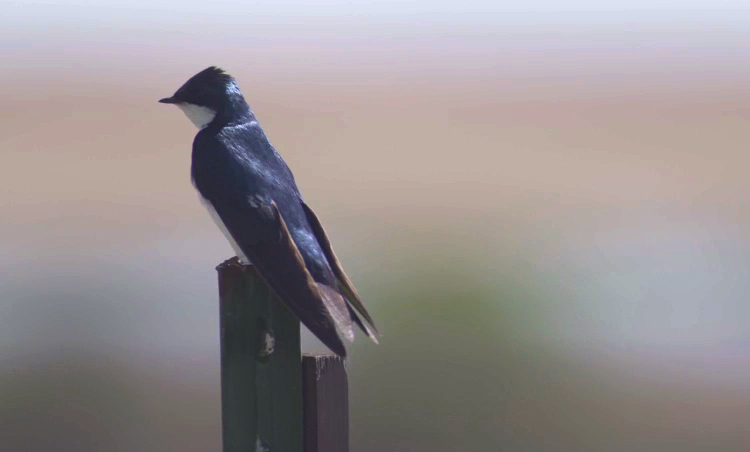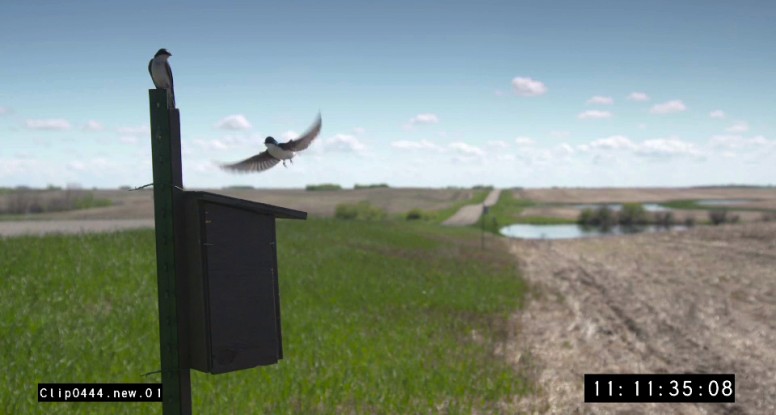The call of the Tree Swallow is a familiar sound to anyone living in the fields and wetlands of rural North America. These songbirds winter farther north than any other American swallow and return to their nesting ground long before other swallows come back.
Distinguished by their deep-blue backs and pure, white fronts, Tree Swallows are known for their impressive flight acrobatics as they chase after insects.
This songbird species has historically thrived in agriculture areas and grasslands. The species has traditionally fared well in grasslands but has quickly begun to lose ground in terms of its population stability. Scientists are beginning to notice that aerial insectivores associated with farmland are now the steepest in decline.
The North American Breeding Bird Survey reports that tree swallows in Canada have declined 62% since 1966. This alarming pattern is also appearing in the USA and Europe.
“Their numbers are telling us something about the environment that they’re living in,” says Christy Morrissey, an eco-toxicologist at the University of Saskatchewan. “The common denominator there is that they are living in an area which is susceptible to pesticides.”
The tree swallow habit of nesting tree cavities and bird house/nestboxes means that scientists can study their breeding behaviour in great detail; they know more about Tree Swallows than any other aerial insectivore. Bob Clarke, a professor at the University Saskatchewan, has been studying them for over twenty years. His research has provided the Morrissey with a strong foundation for continuing to study pesticides and their impact on the species.
Christy suspects the recent introduction of neonicotinoid pesticides could be affecting insect populations, which in turn impacts the Tree Swallow’s diet. “We are seeing very clear differences between sites that have more agricultural intensification than sites that are more natural,” she says. Let’s hope that Christy can find the answer. The Breeding Bird Survey reports that tree swallows in Canada have declined 62% since 1966.


